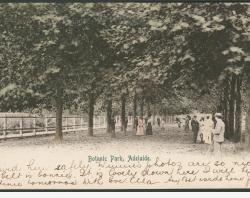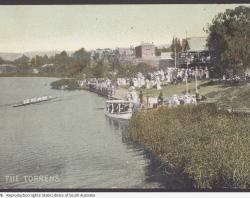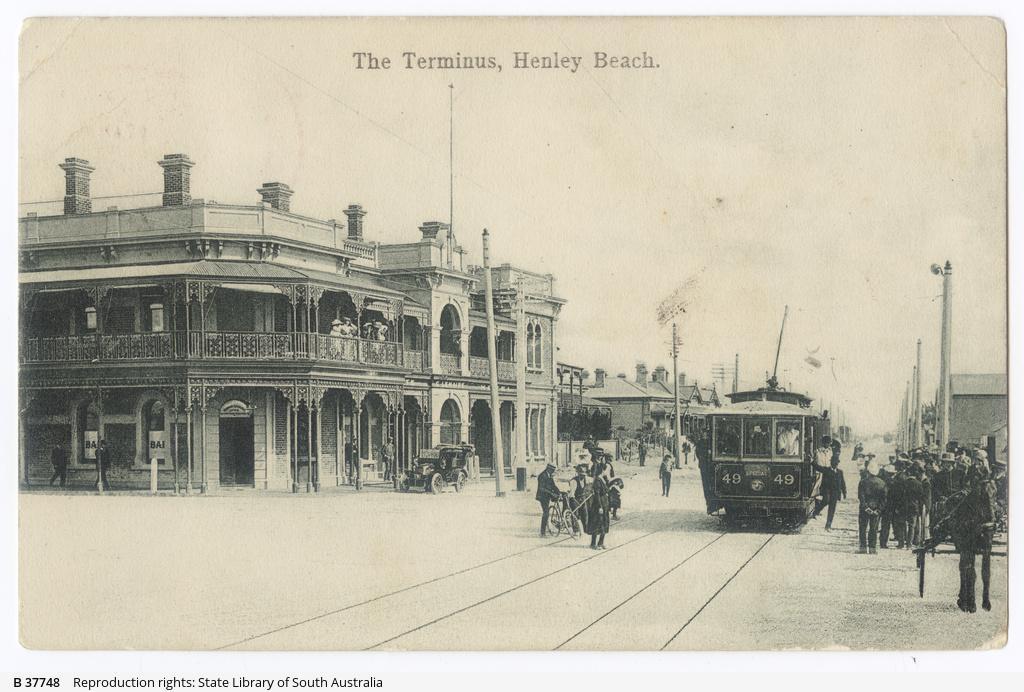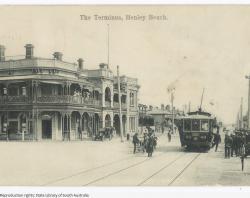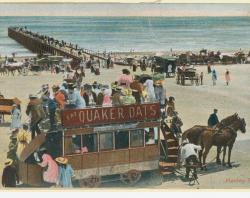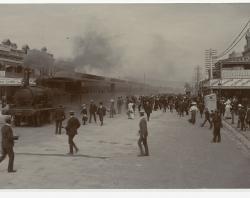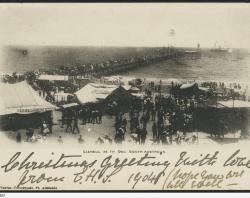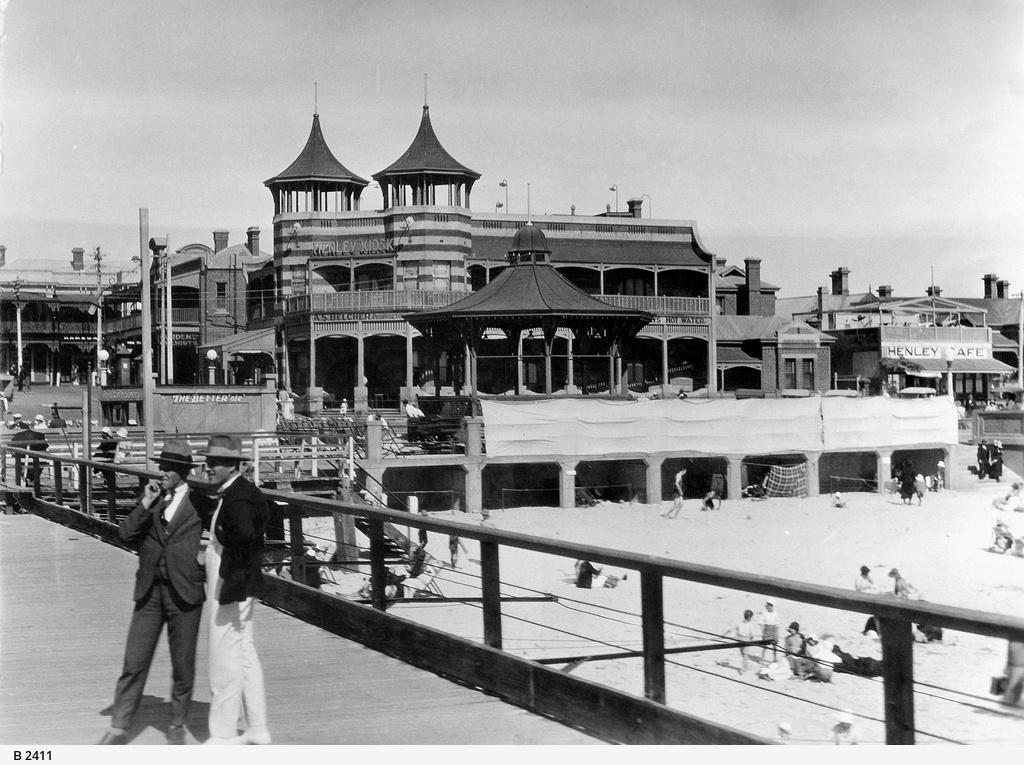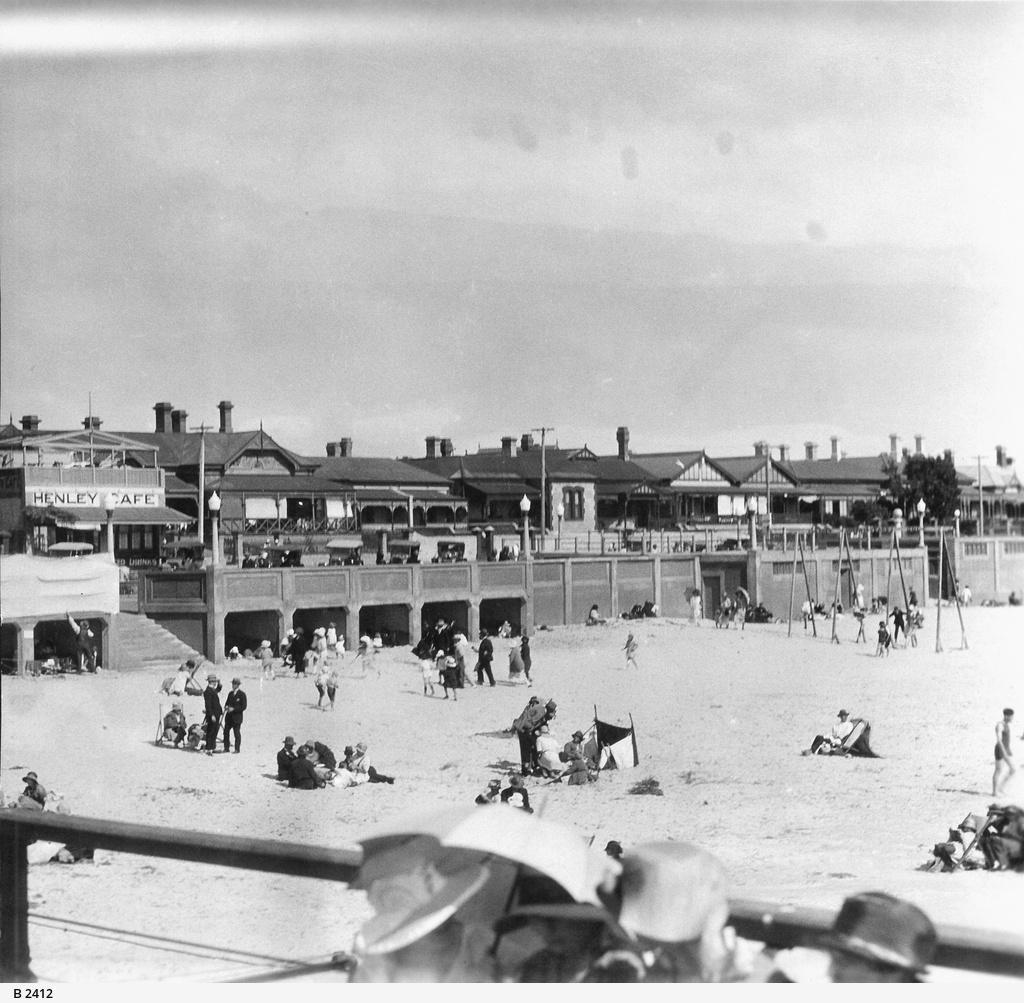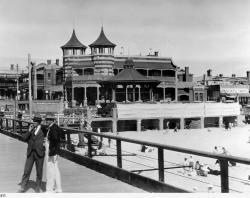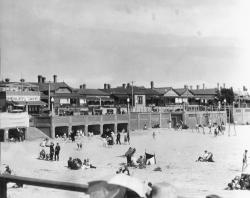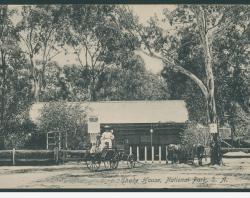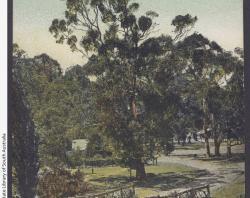
A Day at the Beach
Beaches were extremely popular summer destinations from the nineteenth century onwards. Their popularity increased as the city and suburbs were connected by train and tram. Glenelg, Henley, Brighton and Semaphore were extremely popular. As public transport became established it became possible to travel greater distances for recreation and sightseeing. From 1878 (until 1914) there were horse-drawn trams, and from 1909, electric trams. Various rail lines had radiated out from Adelaide since the 1850s. Port Adelaide and Gawler were the earliest. The train was a convenient mode of travel although very uncomfortable. Beachside lines carried sightseers and holiday makers to popular destinations like Glenelg.
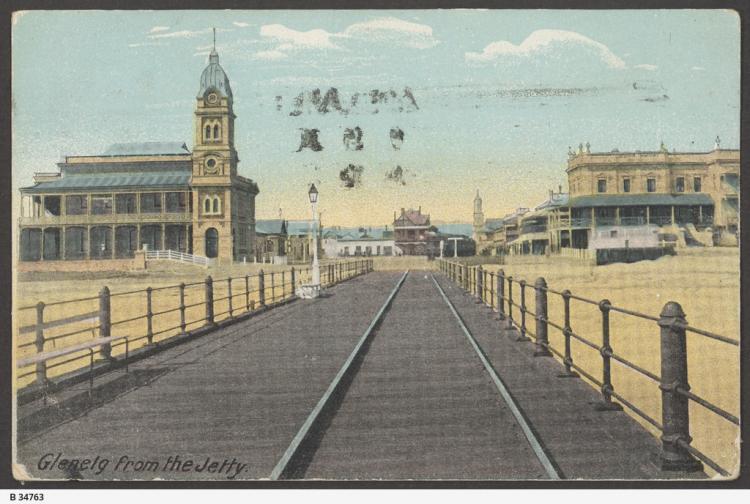
As professional photography became more widespread, views of beaches and other picturesque locations were turned into postcards, published as scenic views, placed in books and brochures, and later, newspapers, to attract visitors or celebrate an occasion.
The Colour tinted postcard above shows a view of buildings in Glenelg, taken from the Glenelg jetty. On the left is the Town Hall, in the centre is the Glenelg Coffee Palace, and on the right is the Pier Hotel.
Not all the holiday activity was at Glenelg. This 1890 image shows holiday time at Semaphore. Large round tents have been erected on the beach. Horses and buggies are lined up along the foreshore. Children are paddling in the sea. Rides and swings can be seen above the tent tops.
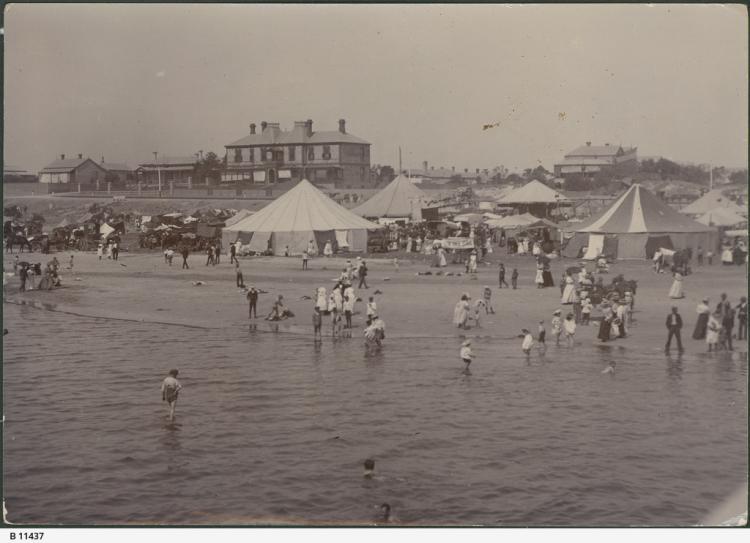
Nearly thirty years later in 1918 a group of anglers is shown fishing near the Customs Office on Largs Bay jetty. A group of spectators watch a young boy inspecting his catch.
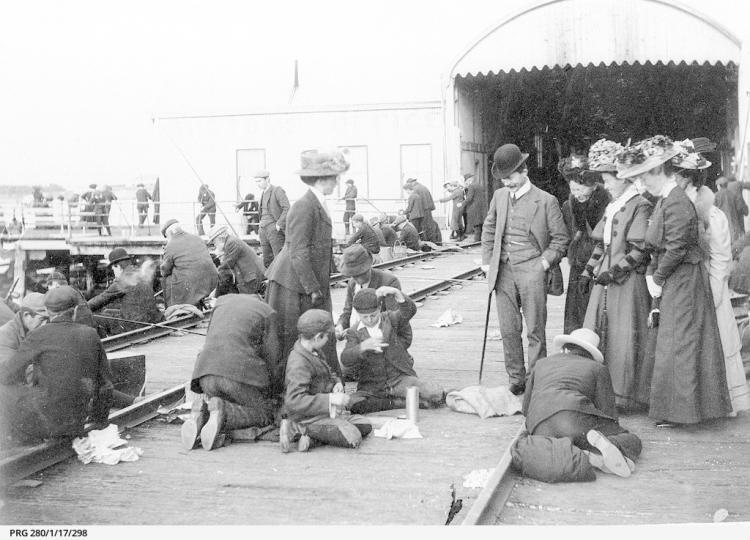
This beach and promenade scene at Henley Beach is part of a panorama taken by D Darien Smith and reproduced in the Chronicle on January 10th, 1925. In the foreground people are walking on the jetty while families relax on the beach. The Henley Kiosk, with its prominent twin lookout towers, opened in 1915. The rotunda can be seen in front of the kiosk with the Ramsgate Hotel behind.

A picnic in the park
By 1909 the introduction of electric trams and the growth of suburban rail meant faster travel and longer leisure. Each weekend trains carried people out of the city. Sometimes as many as six trains ran the route to Belair. The day of the all-day picnic far from the city had arrived.
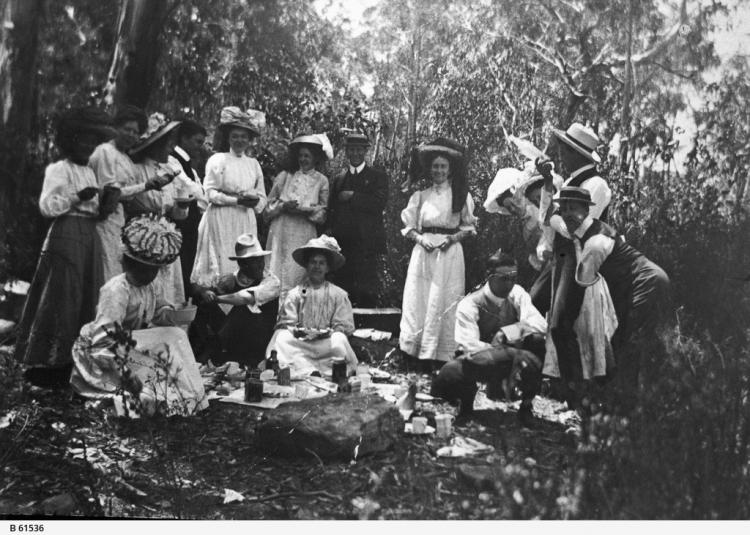
As the twentieth century progressed the expansion of rail and the introduction of an electric tram network networks led to a greater choice of trips beyond the city. Pictured below is an early 1910 motor charabanc or bus outside the Tourist Bureau in King William Street. The Bureau led the way in using motorised vehicles for excursions. With the introduction of motor vehicles, roads improved. By 1910 , horse and carriage trips were being replaced by motor cars and guided charabancs tours.

Destinations further from Adelaide soon opened up as private operators realised that there was money to be made from tourism, especially in transport and accommodation.
Coastal steamers carried passengers to and from Perth, Melbourne, and Sydney. Steamers could be privately chartered but by 1910 regular local travel was in place. Small steamers travelled from Port Adelaide to towns along the coast. Destinations included Stansbury, Ceduna, Port Lincoln, Wallaroo, Port Pirie, Port Augusta, and Kangaroo Island. Aeroplane travel was out of reach for most but for those who could afford it, sea and river travel were early options. River travel for leisure became increasingly popular. The wood-fired river steamer Marion was one of the first paddle steamers to run cruises on the Murray River.
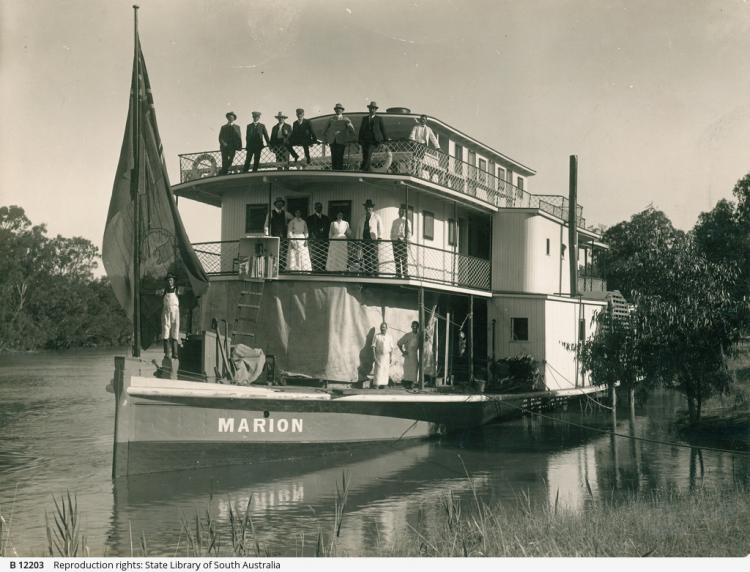
South Australia’s early tourist industry expanded rapidly between the wars. State and interstate travel increased. Holidays away by car, bus, train and boat were now within reach. Family camping and caravanning journeys provided low-cost escapes. Organised sightseeing trips by bus became popular. Excursions to places of local interest were organised. Hotels and guesthouses provided a wide range of accommodation.
Posters, brochures, postcards, and newspaper articles advertised South Australia’s many desirable destinations to attract visitors from interstate and overseas. Tourism flourished and for a time, any time really was holiday time.






